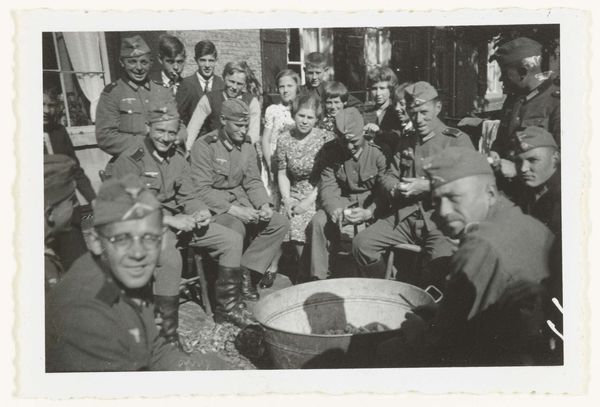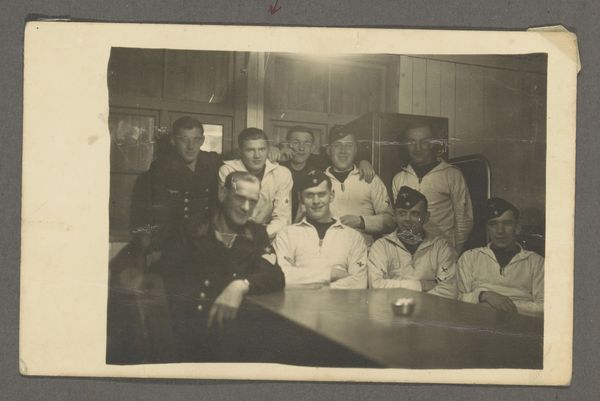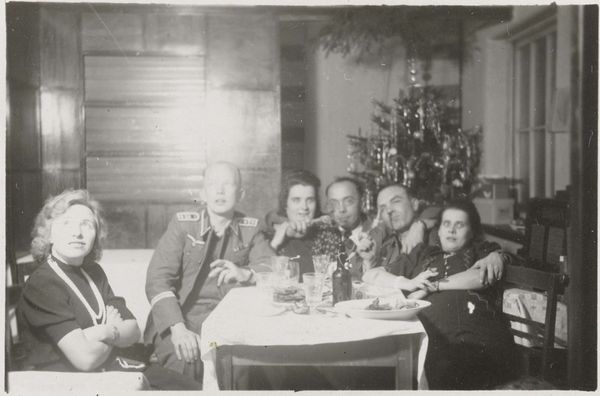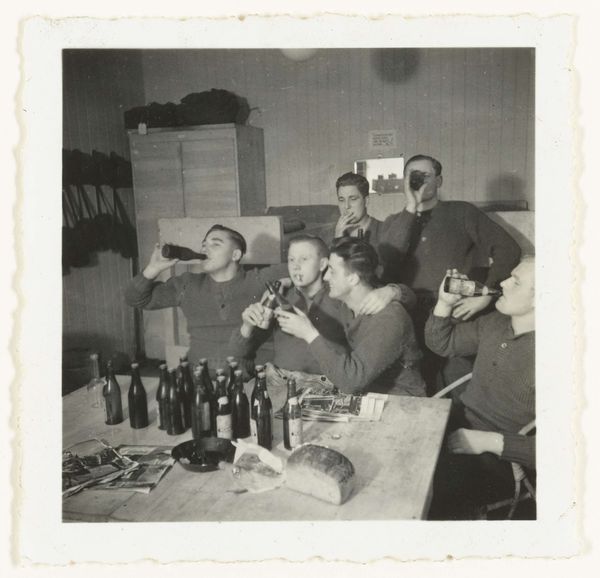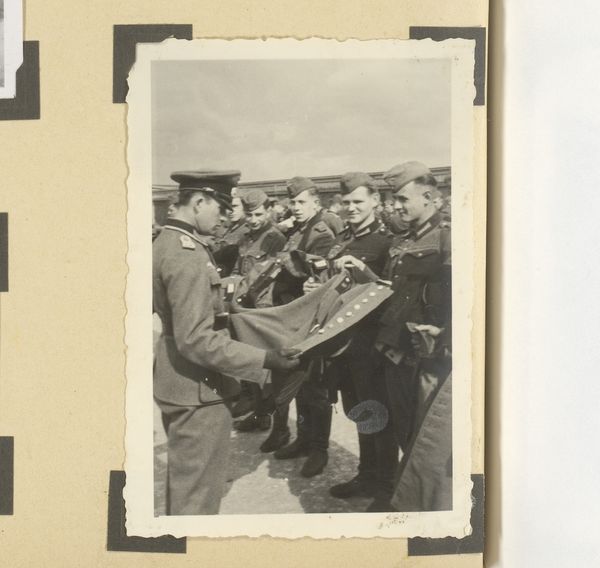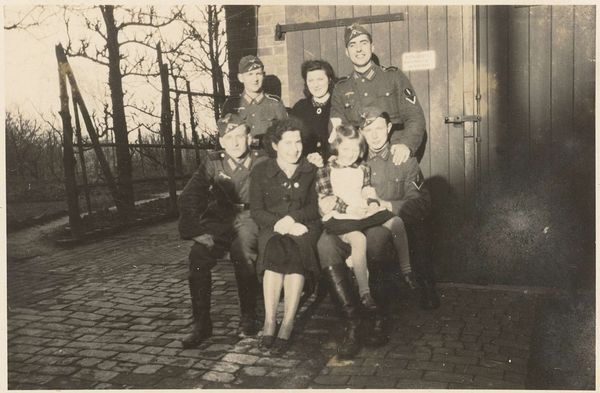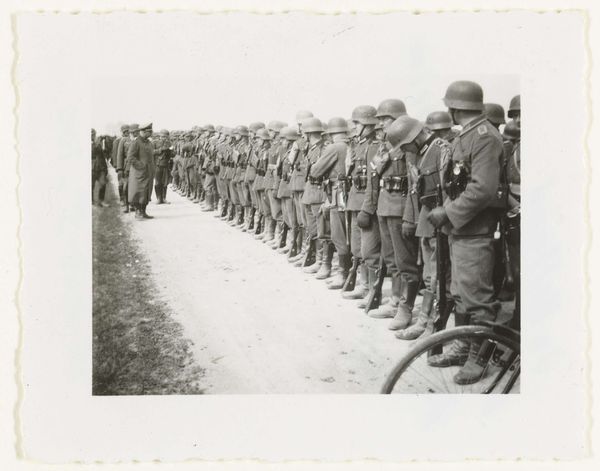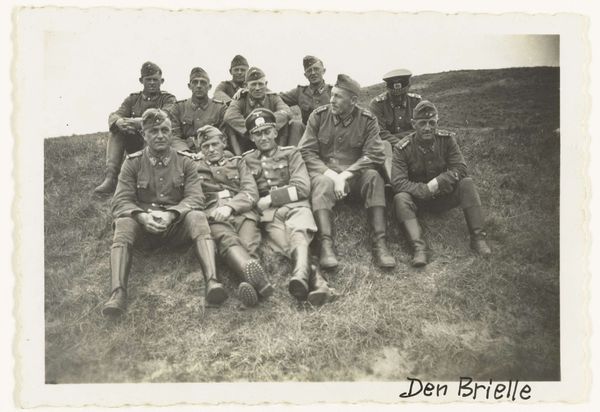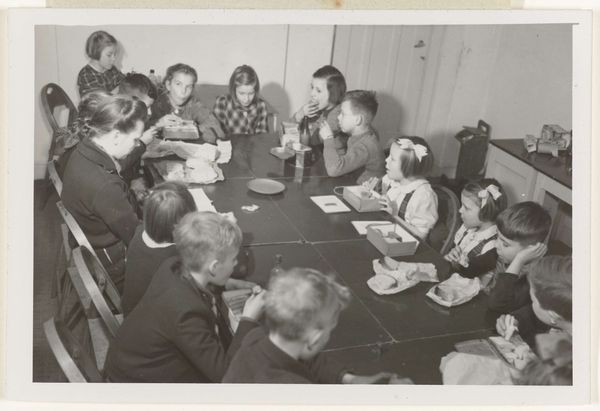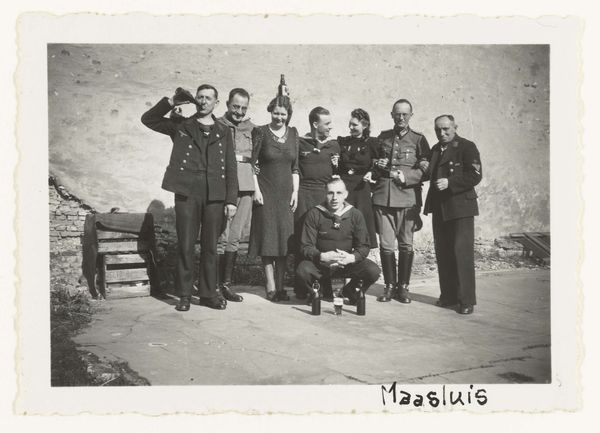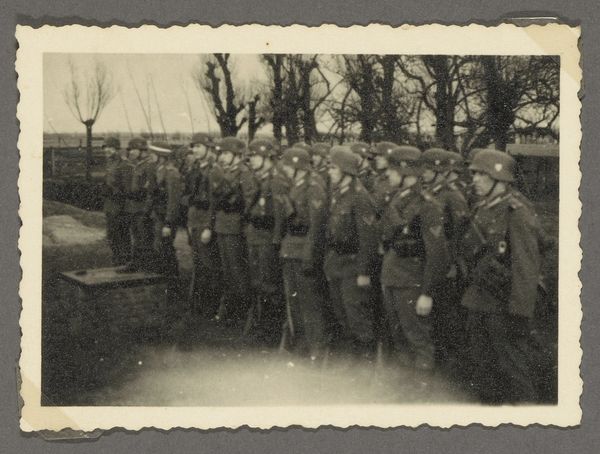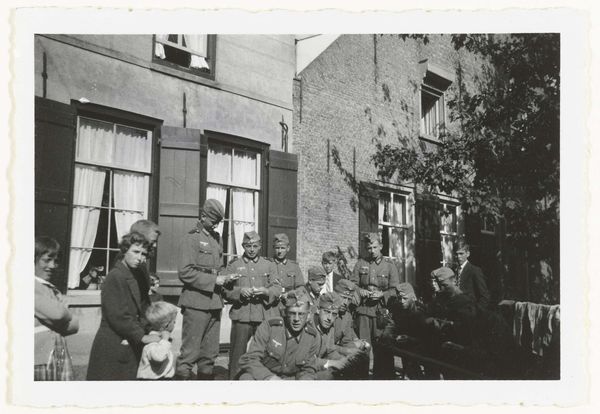
photography, gelatin-silver-print
portrait
print photography
archive photography
photography
historical photography
group-portraits
gelatin-silver-print
genre-painting
history-painting
modernism
Dimensions: height 5.5 cm, width 8.5 cm
Copyright: Rijks Museum: Open Domain
Curator: This photograph, titled "Duitse soldaten vieren feest," or "German Soldiers Celebrating," was taken between 1941 and 1942 by an anonymous photographer. It is rendered as a gelatin-silver print. Editor: It’s a stark, almost banal image, isn’t it? The composition feels off-balance, perhaps intentionally so. The light, source unseen, is so uniform, it’s draining of affect and rather grim. Curator: Indeed. And in that, it offers a chilling look at the everyday lives of German soldiers during the war. We must remember the banality of evil Hannah Arendt spoke of; these men were not monsters, but ordinary people partaking in monstrous activities, fueled and organized by larger social forces. Note their camaraderie, their relaxed poses. This wasn't constant fighting, this was downtime. Editor: Precisely. There is an unexpected domesticity to the scene that clashes fiercely with what those armbands represent. The texture of the light against the harsh, regular outlines of the Nazi symbol worn with nonchalant familiarity; I feel almost assaulted by the juxtaposition of material comfort with this symbol of such horror. Curator: Note the soldier playing the mandolin. It is a bizarre counterpoint that humanizes what we want to define as 'the enemy'. This photo encapsulates the seductive pull of fascism and its banality: the wine bottles, the cigarette smoke, the awkward postures of young men. The cultural programming went so deep that in their moment of shared relaxation this is still who they are, who they must always be, instruments of the state. Editor: And what an intimate capturing of an informal group portrait. The photographer is offering an uncanny level of insight; that feels quite transgressive considering the social norms of the period and subject depicted. Curator: I agree, its survival and eventual placement here at the Rijksmuseum underscores the importance of confronting uncomfortable truths. The public role of art is to instigate reflection and critical analysis, especially of painful histories. Editor: For me, the genius lies in the tension between the ordinary details and the undeniable emblem of oppression worn without a second thought. I’m grateful for the careful ordering of visual material within this frame, even the faded quality of the image brings an interesting semiotic level of abstraction to bear.
Comments
No comments
Be the first to comment and join the conversation on the ultimate creative platform.
